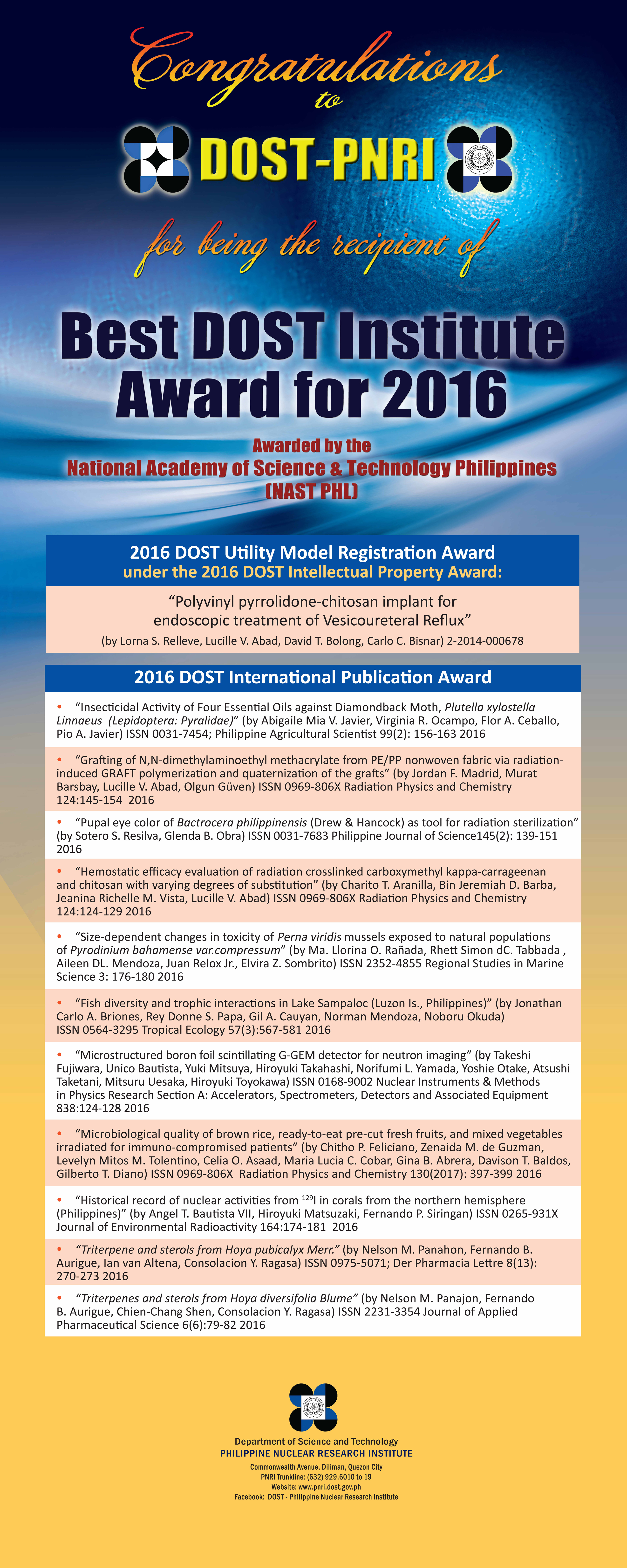PNRI Researcher Wins Awards in Japan
- Details
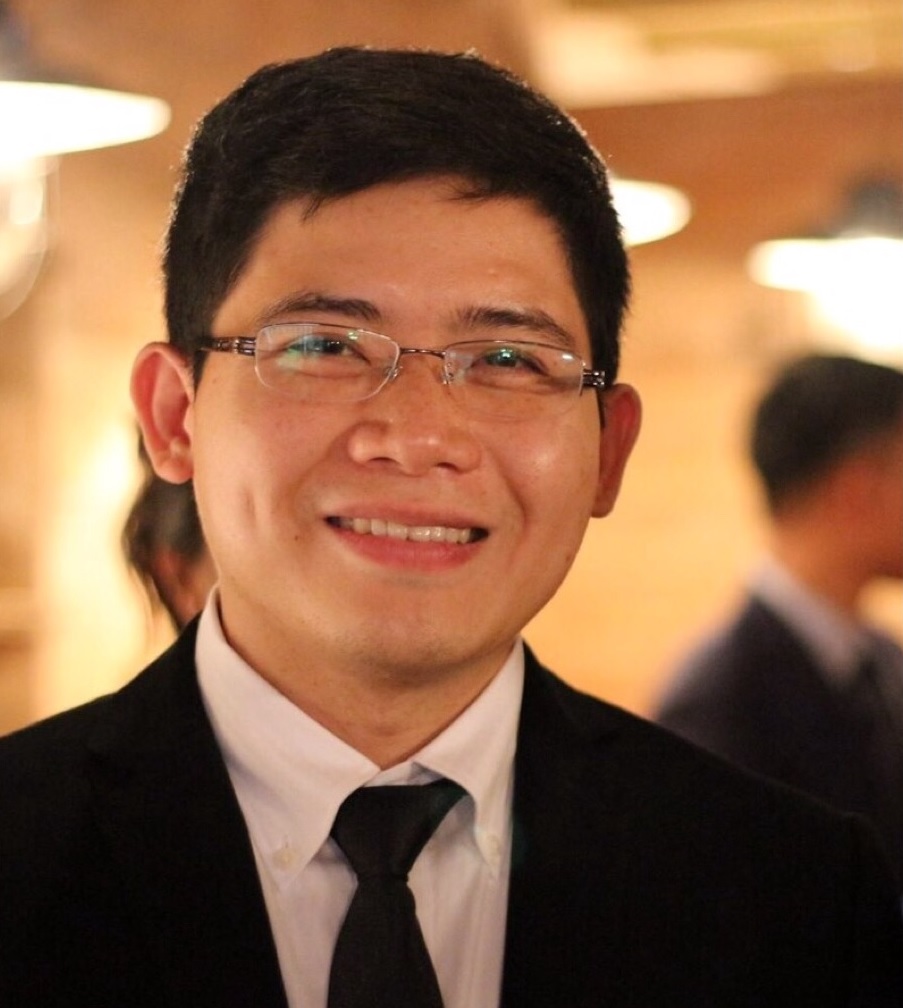
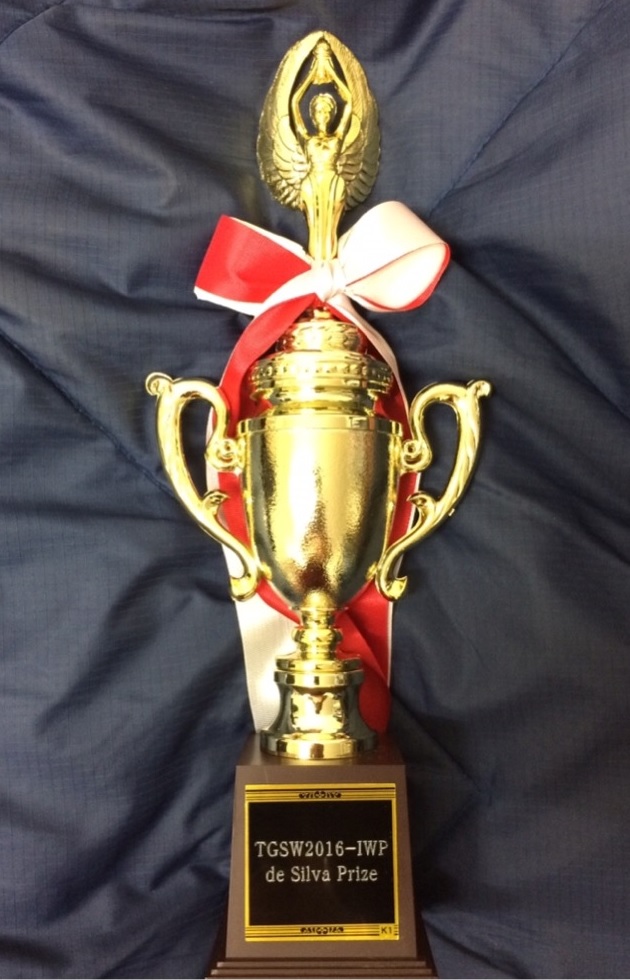
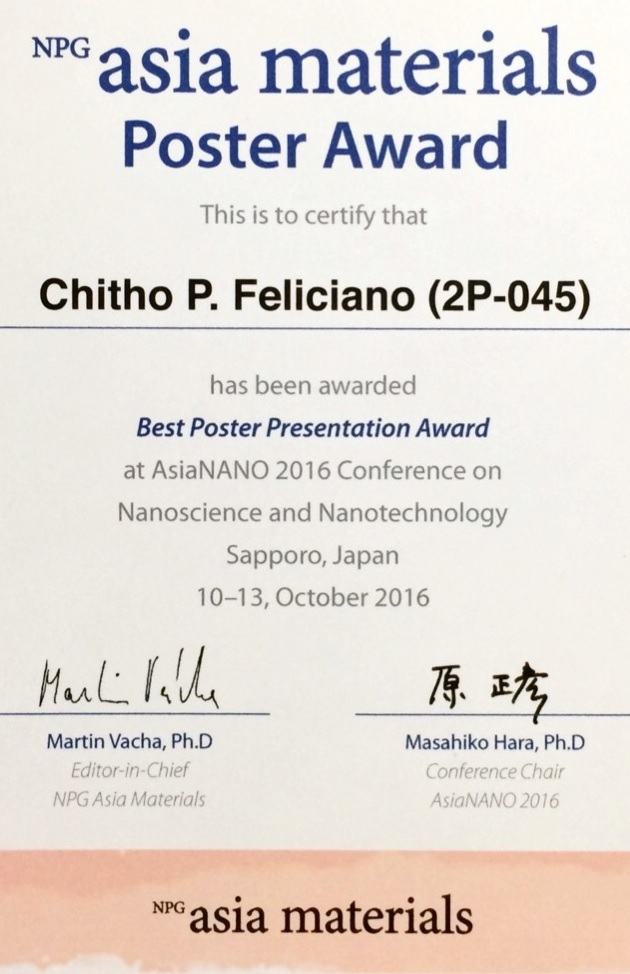
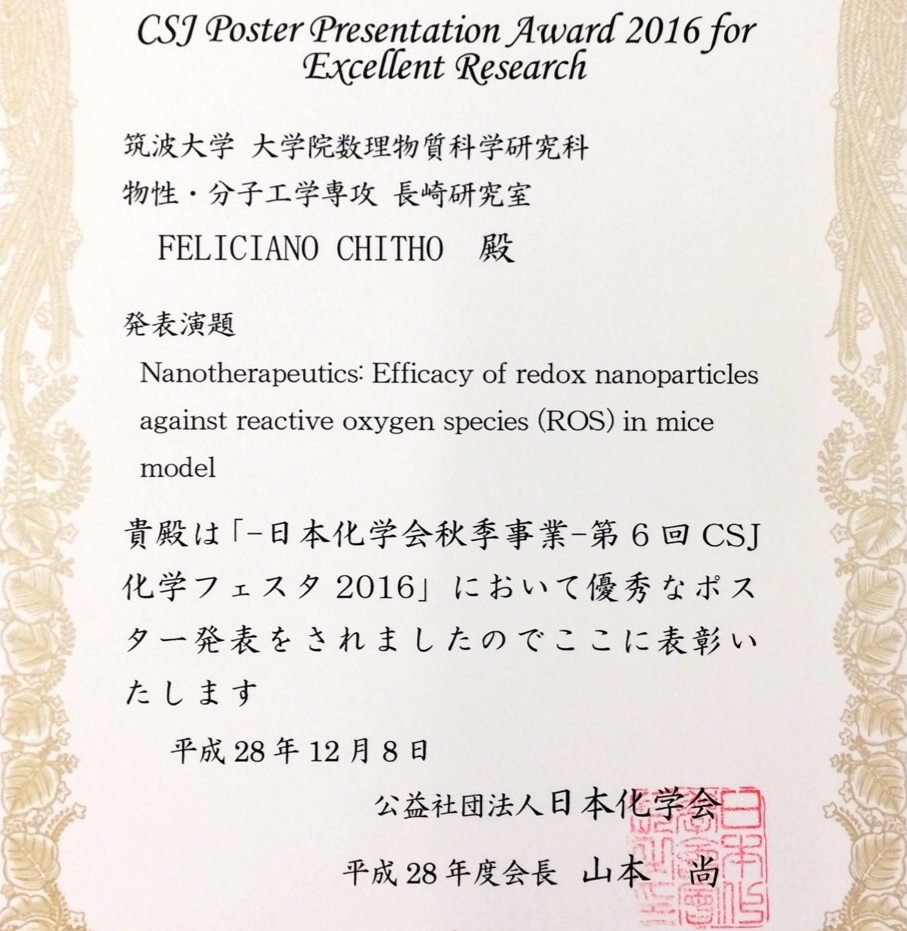
Mr. Chitho Feliciano of the PNRI Biomedical Research Section (top left) wins the De Silva Prize for Best Oral Presentation (top right) in Tsukuba, Japan, the Best Poster Presentation Award during the AsiaNANO Conference (below left) in Sapporo, Japan, and the Best Poster Presentation Award at the Chemistry Society of Japan Festa (below right) in Tokyo, Japan.
PNRI Researcher Wins Awards in Japan
Digging deep into technologies to protect the skin from the effects of radiation, PNRI’s research once again gains the respect of the international community by winning several awards in Japan this 2016.
PNRI Biomedical Research Section senior science research specialist Chitho Feliciano, who is currently taking up his doctorate in Biomaterials Science at the University of Tsukuba since 2014, received the De Silva Prize for Best Oral Presentation at the Interdisciplinary Workshop on Science and Patents during the Tsukuba Global Science Week held in Tsukuba on September 19, 2016.
Feliciano’s research, which was done in collaboration with his Japanese professor, also won two Best Poster Presentation awards. The first was during the Asian Conference on Nano-science and Nanotechnology (AsiaNANO) in Sapporo on October 10-16, followed by the 6th Chemistry Society of Japan (CSJ) Festa held in Tokyo on November 14-16.
His studies aim to use nanoparticles to improve the therapeutic effect of nitroxide radicals and to reduce the effects of skin aging, skin lesions, and other skin inflammatory disorders caused by ultraviolet rays and other forms of ionizing radiation, as well as radiation-induced reactive oxygen.
PNRI Wins Best Poster Award in Canada for Plant Growth Promoters
- Details
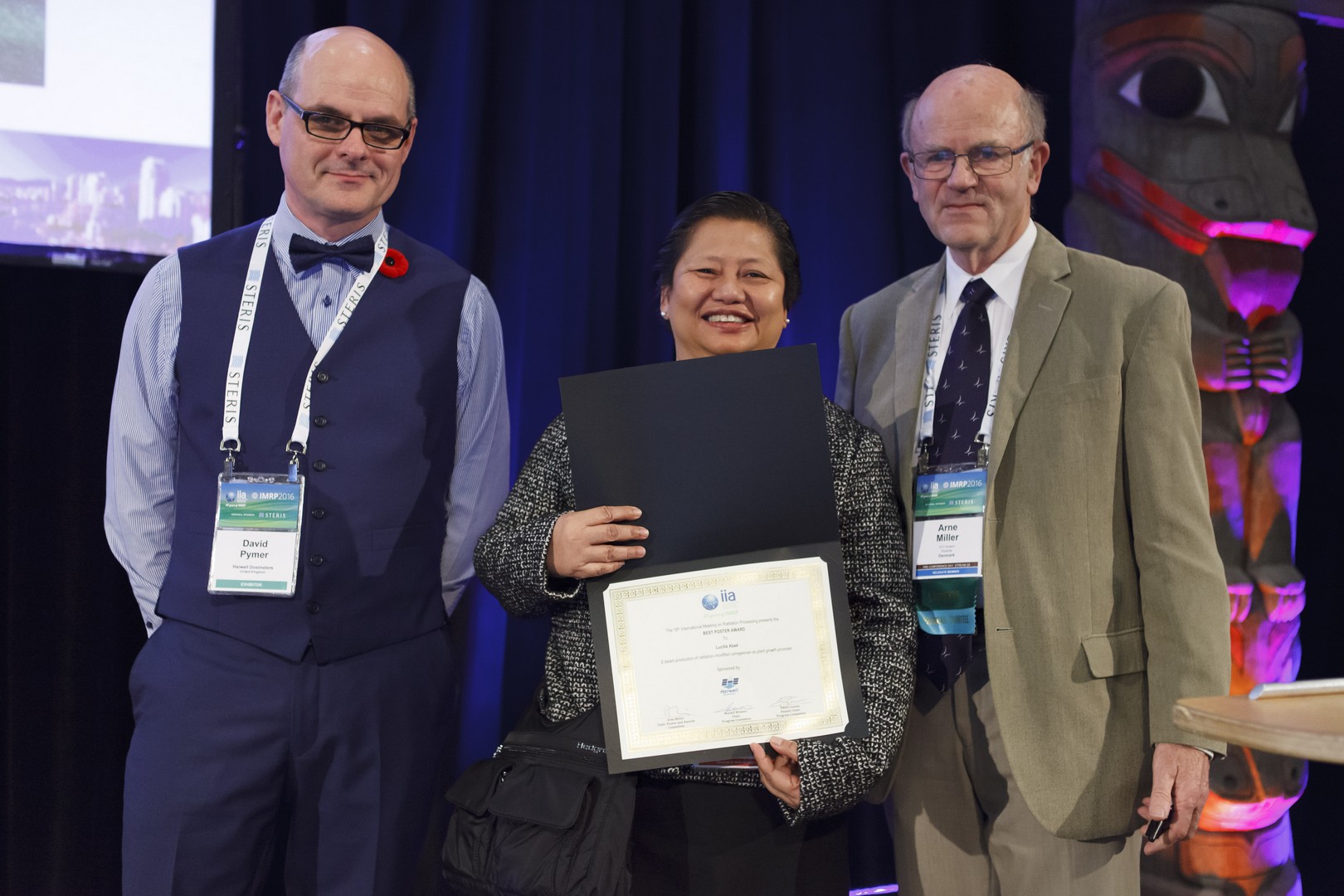
PNRI Scientist Dr. Lucille Abad receives the Best Poster Award from the International Irradiation Association (IIA) for the PNRI project on the development of irradiated natural polymers as Plant Growth Promoters (PGPs) on November 10 in Vancouver, Canada.
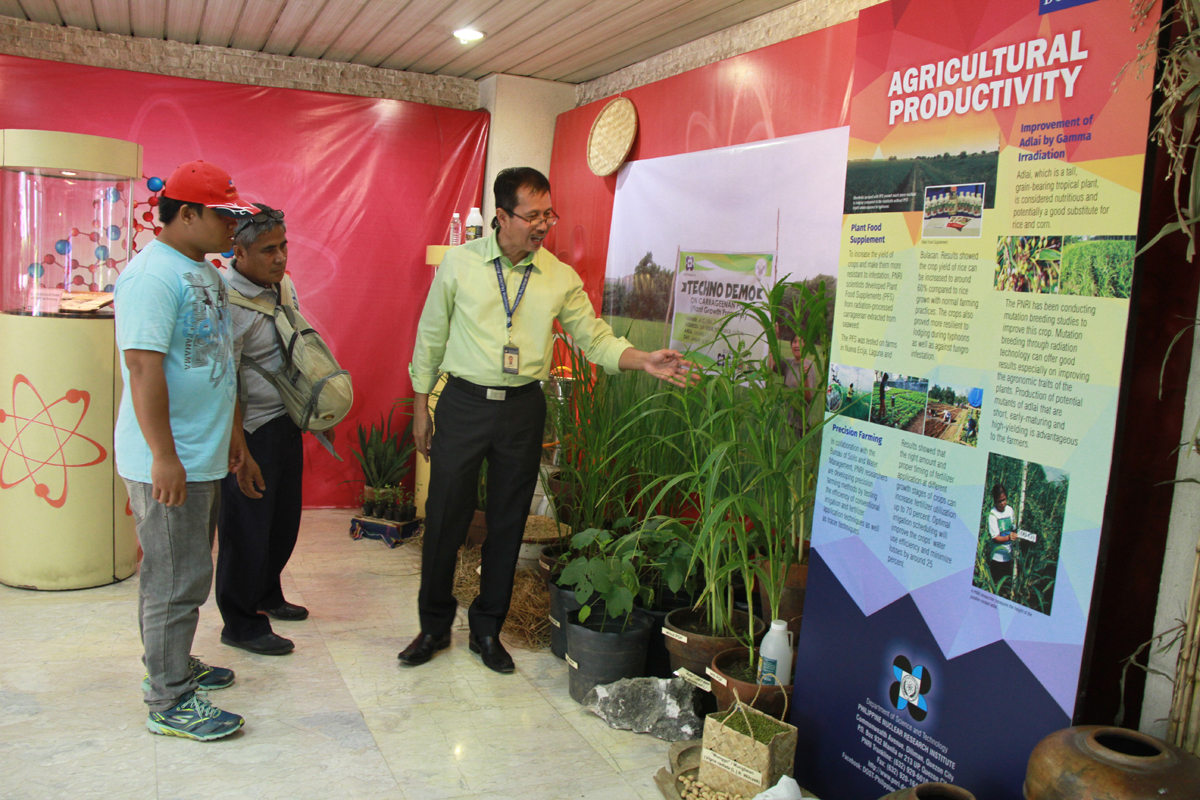
PNRI research specialist Fernando Aurigue explains the PGP exhibits to visiting farmers during the 44th Atomic Energy Week at PNRI.
PNRI Wins Best Poster Award in Canada for Plant Growth Promoters
Bringing home the bacon from the other side of the world, the Department of Science and Technology – Philippine Nuclear Research Institute (DOST-PNRI) ends 2016 by once again gaining worldwide recognition for its research on radiation applications in agriculture.
With their project’s E-Poster “E-beam production of Radiation–Modified Carrageenan as Plant Growth Promoter”, PNRI Scientist and Chemistry Research Section Head Dr. Lucille Abad clinched the Best Poster Award for the Philippines along with other participants from the United States and Ireland during the International Meeting on Radiation Processing (IMRP) held from November 7-11 in Vancouver, Canada.
Organized by the International Irradiation Association, the IRMP serves as a venue where members of the industrial, research and academic sectors from different countries discuss on all aspects of irradiation science and technology. This year’s IMRP poster competition drew submissions from over 80 countries, from which only three submissions, including the Philippines, were selected to receive the Best Poster Award.
The Institute’s PGP project was developed from carrageenan, a natural polymer from red seaweed commonly used in the food industry. The polymer is irradiated and applied by foliar spraying at certain stages of the plant’s life, which later improved the yield and health of crops such as rice, mungbean and peanut.
During field testing, PGPs were proven capable of increasing the yield of rice by up to 65% and making the crops more resilient, whether against strong typhoons or the ravages of tungro infestation. Experiments also showed an increase of up to around ten times the yield for normal practices in mungbean, and up to twice the average yield for peanut.
The PGP project is the product of close collaboration between DOST-PNRI, the Philippine Council for Agriculture, Aquatic and Natural Resources Research and Development and the National Crop Protection Center of the University of the Philippines Los Baños.
PNRI Celebrates the 44th Atomic Energy Week
- Details
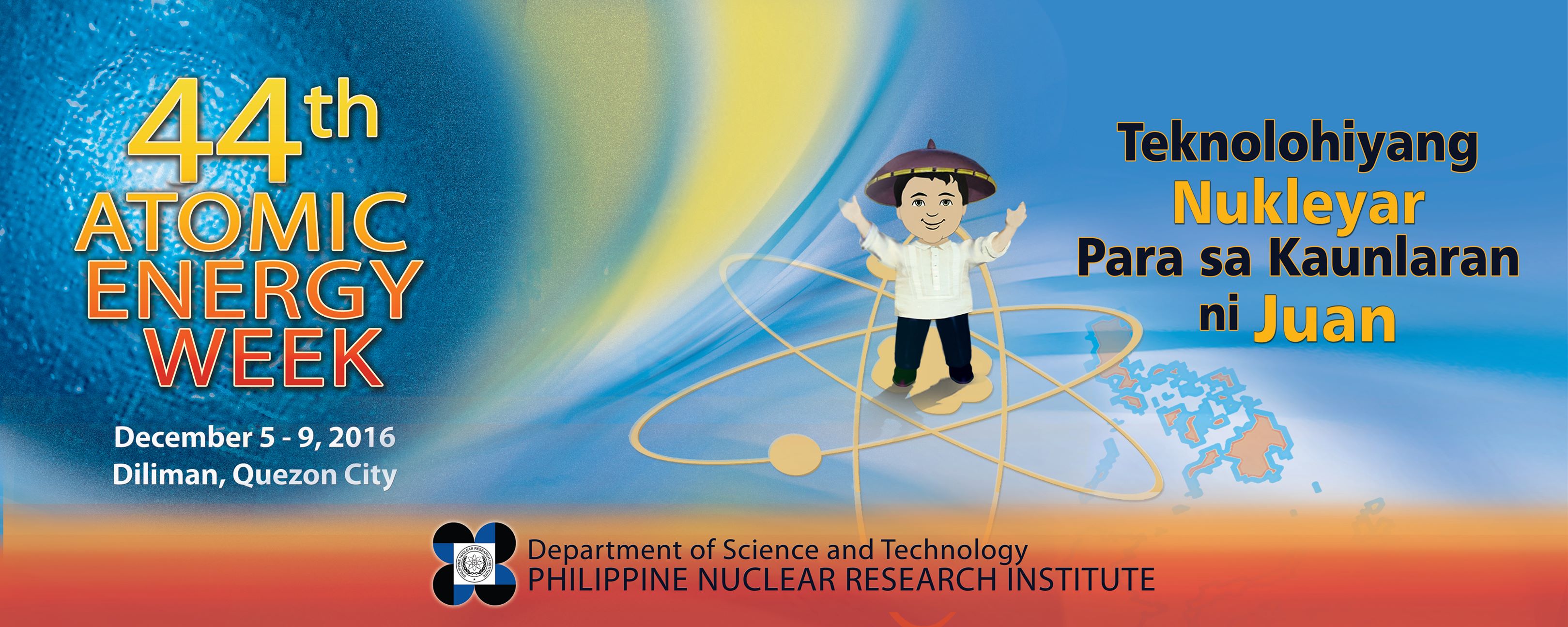
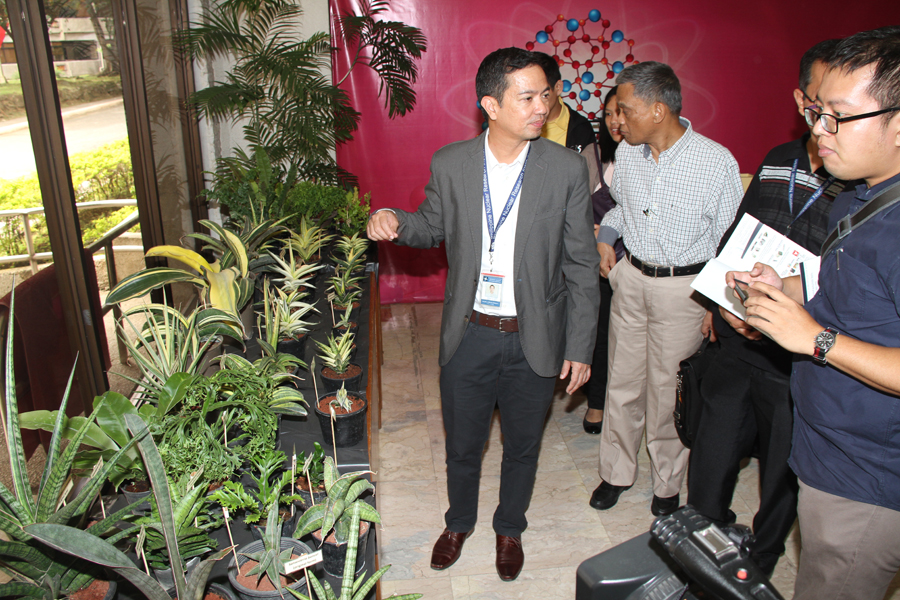
Dr. Carlos Primo David, Officer-in-Charge of PNRI, shows some of the applications of plant mutation breeding to DOST officials and members of the media.
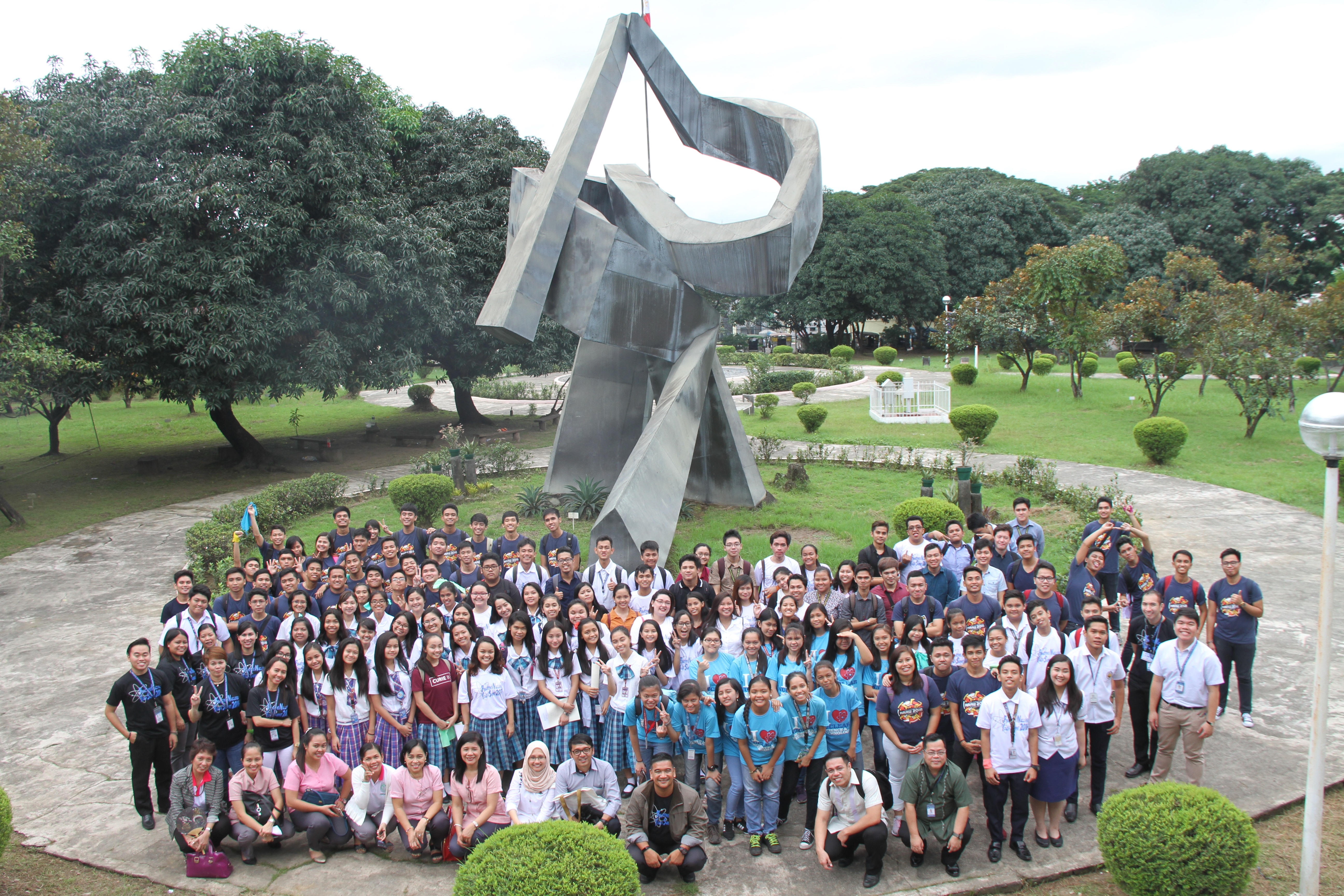
Participants of the Second Philippine Nuclear Youth Summit held on December 7
PNRI Celebrates the 44th Atomic Energy Week
Spearheading the country’s progress in nuclear science and technology, the Department of Science and Technology – Philippine Nuclear Research Institute (DOST-PNRI) celebrated the 44th Atomic Energy Week (AEW) from December 5-9, 2016 at the PNRI compound.
The annual AEW celebration, as mandated under Presidential proclamation No. 1211 in 1973, aims to generate awareness of the Filipino people on the beneficial uses of nuclear science and technology in food and agriculture, industry, medicine and the environment.
With the theme, “Teknolohiyang Nukeyar para sa Kaunlaran ni Juan", PNRI once again featured the latest advances in nuclear science and technology in the country in the fields of agriculture, industry, medicine, and the environment.
PNRI Officer-in-Charge Dr. Carlos Primo David commended PNRI’s efforts in both the development of nuclear and radiation applications and reaching out to various sectors to maximize its benefits.
“We want to public to know that we exist and that the products of our research are quite relevant, maybe not in terms of producing power from nuclear technology just yet, but in terms of the applications of nuclear science in other sectors, such as industry competitiveness, agriculture productivity, health science, and the environment.”
To meet thousands of visitors from various sectors throughout the week, twelve exhibits by PNRI’s own scientists, researchers and regulators featured their various projects and services to compete for the Best Technical Exhibits Category. The PNRI Chemistry Research Section won first place with their exhibit entitled Chemistry Research Section, We Explore, We Develop featuring diverse applications of carrageenan and receptor binding assay for red tide monitoring. The second place was won by the Agriculture Research Section exhibit Smart Juan: Ang Makabagong Dalubsaka which featured a timeline of agriculture history and its development of precision farming and sterile insect techniques. The Biomedical Research Section’s Teknolohiyang Nukleyar: Kalusugan Ang Handog Para Kay Juan won third place which featured food irradiation, honey alginate wound dressing and cytogenetic services, while the People’s Choice Award went to the Radiological Impact Assessment Section’s PNRI Emergency Response: Minimizing the Consequences of Ionizing Radiation.
Technical Sessions were also held on December 5 and December 6, with experts from PNRI and other scientific institutions delivering lectures on the applications of nuclear analytical and isotopic techniques in air quality and algae studies, records of nuclear activities through Philippine corals, radiation processing, nuclear medicine, and the establishment of several advanced facilities such as a research reactor, accelerator, subcritical reactor assembly and neutron laboratory.
Meanwhile, students, teachers and young professionals attended the Second Philippine Nuclear Youth Summit held on December 7. Speakers from PNRI along with youth leaders from Malaysia and Indonesia inspired the students to engage in science and mathematics-related courses, especially nuclear science, and to encourage the youth nuclear S&T professionals and students to initiate the establishment of the Philippine Young Generation in Nuclear. The Summit also showcased Filipino creativity and skill as the youth participants competed in various games and group dynamics.
Speaking of competitions, twenty teams of high school students from across the country competed in the national level of the 2016 Philippine Nuclear Science Quiz (PNSQ). Manila Science High School won first place, followed by Pasig City Science High School and Philippine Science High School – Eastern Visayas. The first placer received a cash prize of Php 50,000, the second placer Php 40,000 and the third placer Php 30,000, all including plaques and certificates of recognition.
At the closing ceremonies on December 9, PNRI recognized the achievements of its scientists and researchers who recently won twelve DOST International Publication Awards, which also resulted in PNRI being awarded the Best DOST Institute Award for 2016 by the National Academy of Science and Technology (NAST). Dr. Teofilo San Luis of the Philippine Society of Nuclear Medicine (PSNM) delivered the closing remarks.


























